class i occlusion definition
Although this is a gross oversimplification a Class I occlusal relationship is often identified by the lower anterior incisors sitting just behind. Overjet horizontal overlap of incisors.

Kate Dental Technology Key To Occlusion Los Angeles City College
Class I.

. A3 The BEST textbook on dentistry. Class Iii Malocclusion ANGLE Class I. Centric relation is the relationship of mandible to maxilla when the head of the condyle is in the most retruded unstrained position in the glenoid fossa.
CLASS I MALOCCLUSION THE MESIOBUCCAL CUSP OF THE UPPER FIRST PERMANENT MOLAR OCCLUDES WITH THE MESIOBUCCAL GROOVE OF THE LOWER FIRST MOLAR BUT LINE OF OCCLUSION IS INCORRECT BECAUSE OF MALPOSED TEETH ROTATIONS OR OTHER DISCREPANCIES. The lower incisor edges lie posterior to the cingulum plateau of the upper incisors Division 1 the upper central incisors are proclined or of average inclination and there is an increase in overjet. Class I occlusion is also known as.
Class 1 malocclusion is the most common. The bringing of the opposing surfaces of the teeth of the two jaws into contact also. This is also known as the standard of occlusion and what we try to achieve.
There are 3 different classes of occlusion cases. Class III malocclusion. Teeth are aligned in Cusp Fossa relationship with their antagonist teeth.
Typically your teeth should fit easily inside your mouth without any crowding or spacing concerns. The cusp of the upper first molar rests in the groove of the lower first molar. When you look at the teeth from a lateral view the incisal edge of anterior teeth and the cusp tips of posterior teeth form a curved line.
The act of occluding. The three classes according to Angles classification are as follows. The state of being occluded.
Same as normal occlusion but characterized by crowding rotations and other positional irregularities. The complete obstruction of the breath passage in the articulation of a speech sound. Every dentist should read.
A Class I malocclusion is presented as an internal derangement eg crowding in one of the arches. This is the correct occlusion and it gives the person a well-balanced profile in the anteroposterior plane. Occlusion is an integral part of dental treatment as dentists cannot repair move or remove teeth without affecting occlusion.
Centric occlusion maximum intercuspation of maxillary and mandibular teeth. The bite however is normal. Same as normal occlusion but characterized by crowding rotations and other positional irregularities.
The plane of occlusion curve of spee should be flat to 15 mm deep. - The mesial incline of the maxillary canine occludes with the distal incline of the mandibular canine. Class II Malocclusion A malocclusion where the molar relationship shows the buccal groove of the mandibular first molar distally positioned when in occlusion with the mesiobuccal cusp of the maxillary first molar.
The relation between the surfaces when in contact. The mesiobuccal cusp of the upper first molar occludes with the buccal groove of the lower first molar. Class I is a normal relationship between teeth jaw and jaw.
When the mandible moves to the left or right the mandibular posterior teeth move laterally across the opposing teeth. Angles described Normal occlusion Three types of malocclusion - Angles class I malocclusion Angles class II malocclusion - division 1 and division 2 Angles class III malocclusion. The mesiobuccal cusp of the maxillary first permanent molar occludes with the mesiobuccal groove of the mandibular first permanent molar.
The masticatory system comprises the teeth the periodontal tissues and the articulatory system. Class I occlusion is also known as. Class I is a normal relationship between teeth jaw and jaw.
Class I Malocclusion A normal molar relationship exists but there is crowding misalignment of the teeth cross bites etc. A Class I occlusion is what is typically considered the ideal and least destructive occlusal relationship. Maxillary canine is in between md canine and 1st premolar.
Simplistic definition of occlusion. Class II malocclusion Div 1 2. In Class I occlusion the predominant contacts occur on the incisal and labial surfaces of the mandibular incisors and the incisal edges and palatal fossa areas of the maxillary incisors.
Characterized by a normal relationship between the dental arches where the mesiobuccal cusp of the maxillary first permanent molar occludes into the buccal groove of the mandibular first permanent molar. Class II occlusion occurs when the lower dental arch is posterior more towards the back of the mouth than the upper one. This is noted as NORMAL occlusion.
In order to better understand types of occlusion its been broken down into three categories. The mesiobuccal cusp of the upper first molar occludes with the buccal groove of the lower first molar. Class I malocclusion is defined as that malocclusion in which the lower incisors occlude on or directly beneath the cingulum plateau of the upper incisors Figure 21.
ANGLES CLASSIFICATION OF NORMAL OCCLUSION Mesiobuccal cusp of upper first permanent molar occludes into the buccal. The anteroposterior relationship is normal but there may be vertical or transverse malrelationships of the jaws or teeth. Class 1 Class 2 and Class 3.
The way teeth meet and function. The three classes according to Angles classification are as follows. The lower incisor edges occlude with or lie immediately below the cingulum plateau of the upper central incisors Class II.
ANGLE Class I. An overbite means that. The way teeth meet and function.
Definition of occlusion. The relationship of the maxillary teeth to the mandibular teeth when the patients bite on their back teeth. Class 1 Malocclusion Neutrocclusion This is the most common type of malocclusion in which the upper teeth overlap the lower teeth.
Occlusion refers to the alignment of your teeth. Mesiobuccal cusp of maxillary 1st molar is directly in line in mesiobuccal groove of md. The upper incisor inclination is average and the overjet is 23 mm.
- static relationship between incisal and masticatory surfaces of maxillary or mandibular teeth tooth analogues. Class I occlusion. Class I malocclusion.
The articulatory system is in itself a triumvirate comprising the.

Angle S Classification For Malocclusions Dentalnotebook
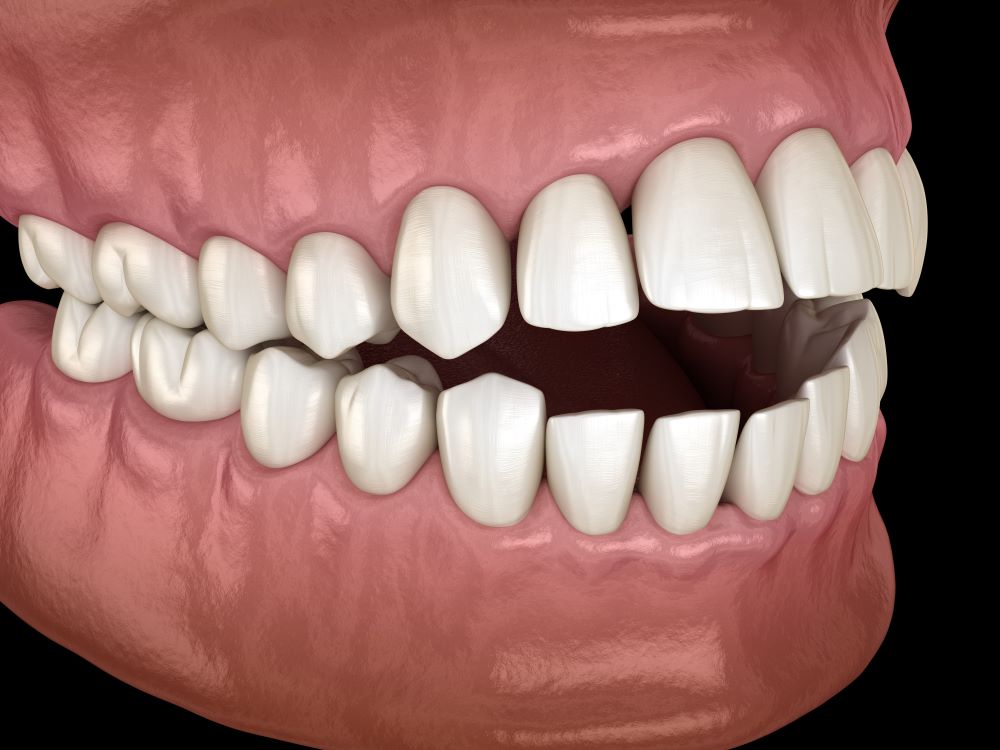
What Is A Class 1 Malocclusion Dental Information

Treatment Of Class Ii Malocclusions
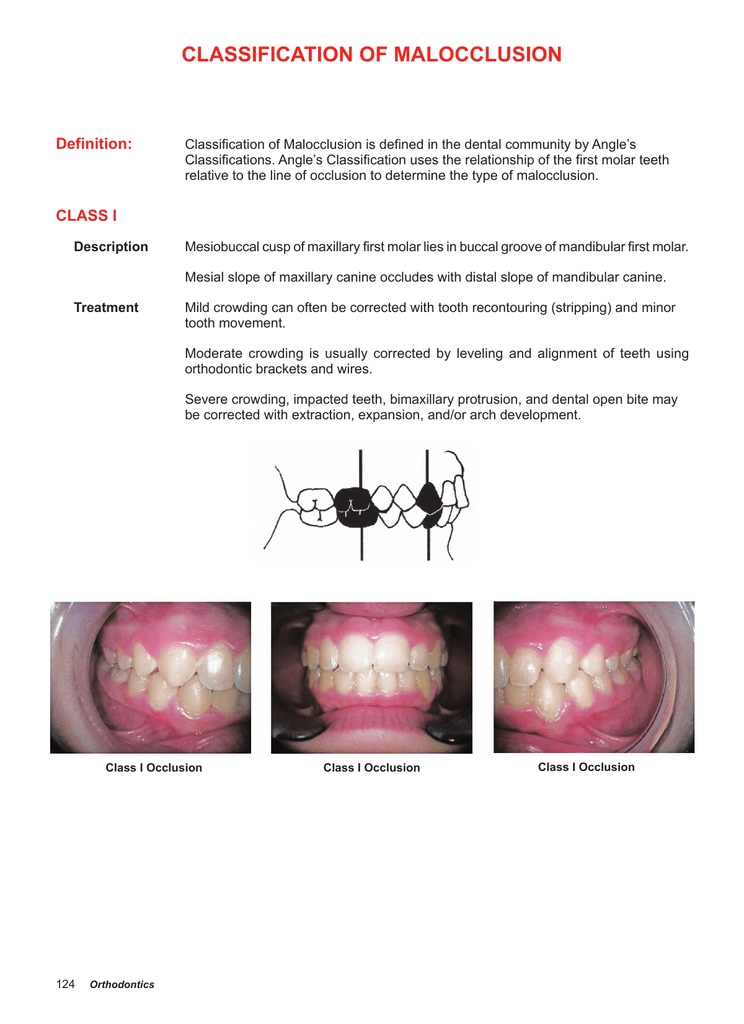
Classification Of Malocclusion
What Is Dental Occlusion And Malocclusion Quora

Do You Know What Occlusion Class You Have

Malocclusion And Dentofacial Deformity In Contemporary Society Pocket Dentistry

Angle S Classification For Malocclusions Dentalnotebook
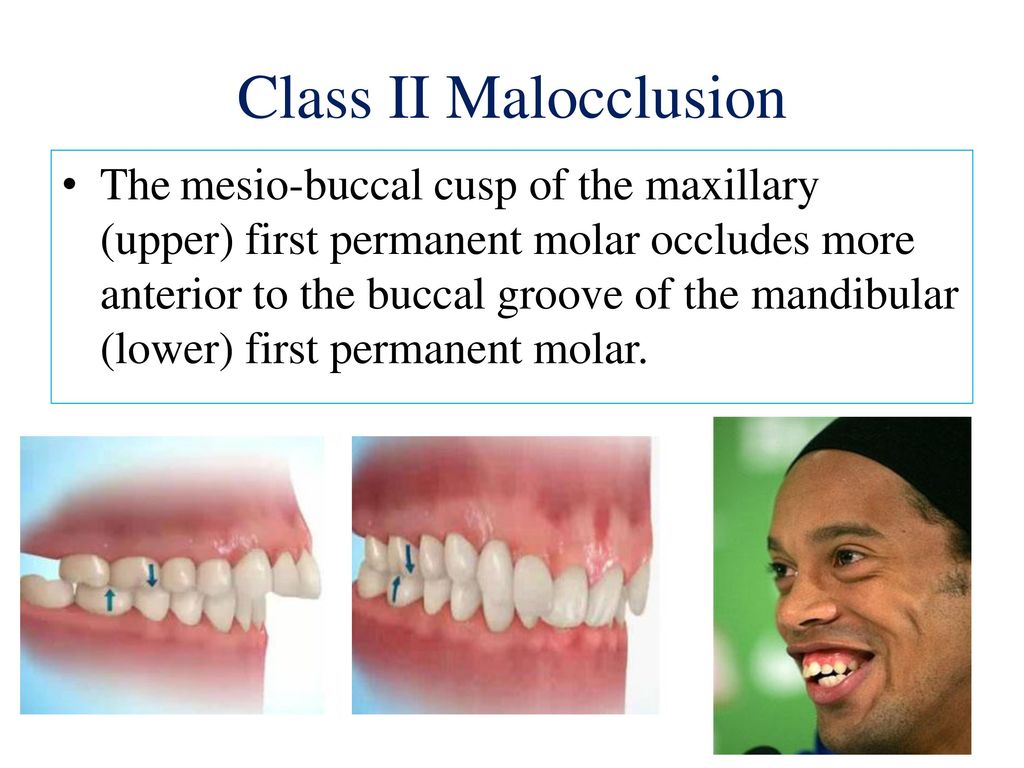
Classification Of Orthodontic Malocclusion Ppt Download

Types Of Malocclusion And Correction Winchester Dental
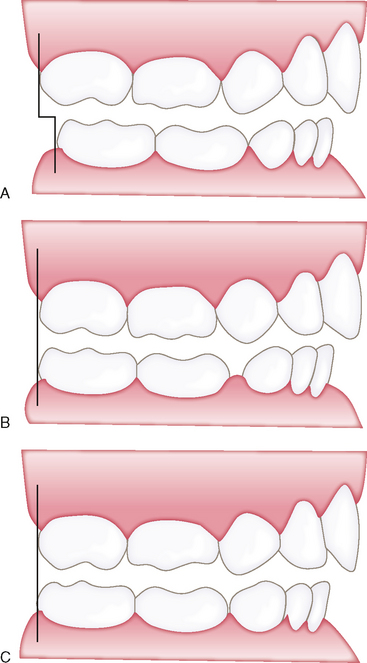
27 Managing The Developing Occlusion Pocket Dentistry
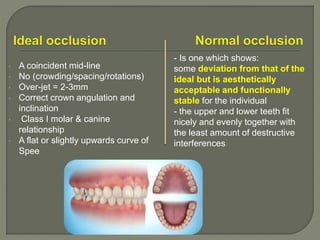
Classification Of Malocclusion

Occlusion Review Flashcards Quizlet

Classifiation Of Normal Occlusion And Malocclusion Flashcards Quizlet

Angle S Classification For Malocclusions Dentalnotebook

Ideal Occlusion Versus Malocclusion Pocket Dentistry


